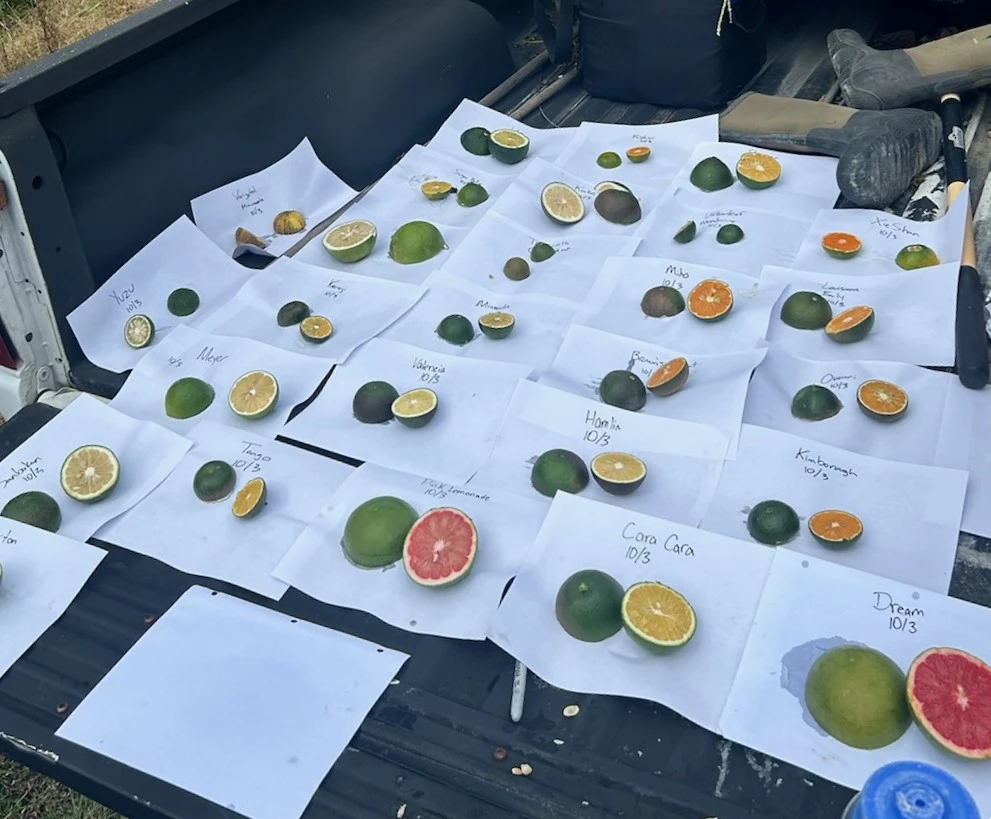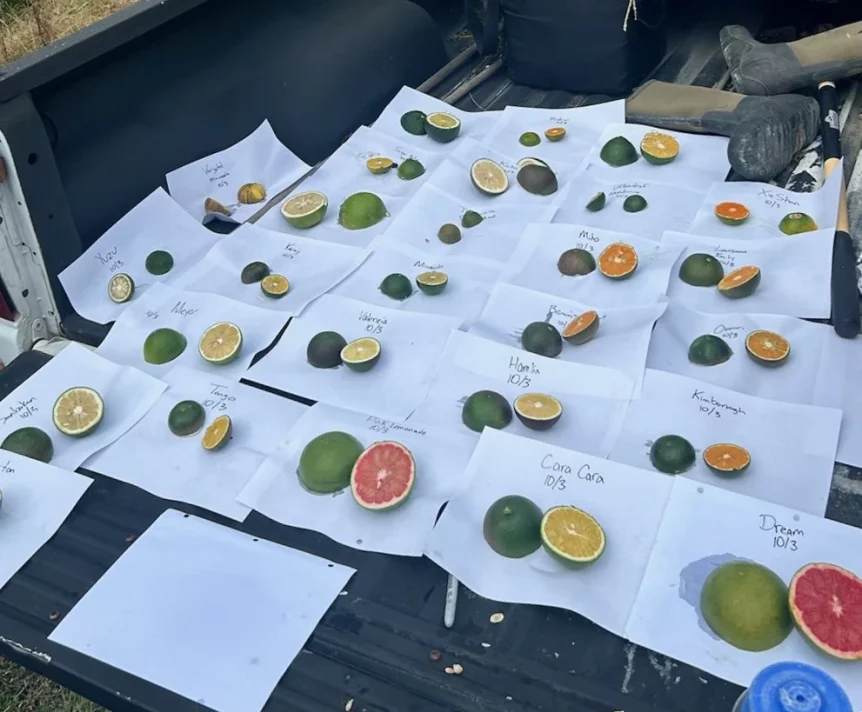
Weekly Field Update
Clemson Extension agents provide updates in The South Carolina Grower this week about the status of various crops being produced throughout the state.
Coastal Region
Anna Sara Hill
- Some areas of the coastal plain are still cleaning up after Hurricane Helene. Most of the damage in this area was in the form of downed trees and power lines. There were some crunched roofs and broken fences from trees falling on them, and some shingles that were blown off the houses. Most of the area has power back on, but there are some that are still without.
- Some growers lost hoop house covers and plastic in the field. Taller plants got leaves stripped or were bent over by the wind.
- A pecan grower lost a few trees and lots of nuts but stated that he still has “some nuts on the trees,” and he will still be able to make a crop, although it will not be as large of a crop as what he had originally hoped.
- Some areas in Bamberg, Allendale and Hampton received high quantities of rain. One grower estimated that he got close to 12 inches of rain. However, he was able to harvest his fall squash crop and did not lose too much.
- Some crops such as carrots and beets had to be replanted due to damage from the heavy rain.
- A couple of growers reported that they received collard transplants prior to the storm and were unable to plant them for several days due to wet fields. By the time they were able to get in the field the plants had stayed in the boxes too long, so more had to be ordered.
- Most of the growers I spoke with felt they were lucky, and the damage was minimal compared to the devastation that Hurricane Helene caused in North Carolina. We are all thankful that our area was spared. Our thoughts and prayers go out to those that lost everything.
Zack Snipes
- We fared well from the storm and things seem to be back to normal now.
- I am seeing downy mildew really jump on cucurbits right now. We had a training at the Coastal REC this week where they monitor and study the disease. The takeaway from the training was that growers cannot miss a fungicide treatment in the fall due to perfect weather conditions each and every year.
- Watermelon is coming out of the field right now with moderate disease issues.
- Melonworm is widespread in squash and zucchini right now.
- Caterpillar pressure is increasing in brassica fields. Most fields are just under threshold but need to be monitored closely this week. Justin authored an amazing document on how to determine caterpillar threshold levels in brassica fields.
Midlands
Phillip Carnley
- Due to the rain from Hurricane Helene, mustard green and rutabaga have been experiencing bacterial root rot, causing entire plantings to collapse in wetter portions of fields.
- Cucumber beetle is continuing to be one of the more prevalent pests in cucurbits and causing some feeding damage on leafy greens as well.
- The last plantings of pickling cucumber were harvested with yields looking to be average. With added rain the occurrence of pythium has increased on plants but not attacking fruit.
- Diamondback caterpillar and cross-striped cabbageworm are being observed in greater numbers. Treatments of BT and the use of longer residual chemical control like Coragen and Harvanta have been effective means of control.
Rob Last
- After the storm, disease pressure is increasing markedly in many crops.
- Bacterial specks and spots are both active in tomatoes and peppers. Rotation with fixed copper, Manzate and Actigard may help to suppress disease development. With a systemically acquired resistance product such as Actigard, be very careful with rates; higher application rates can lead to the stunting of plants and potential yield losses. For organic growers, Lifegard or Agriphage may be potential options. Bacterial diseases typically require a wound site; splits to the leaves, scarring or bruising, and conducive weather conditions.
- Anthracnose, Alternaria and late blight are also readily apparent in many crops.
- Brassicas are showing delayed growth and vigor rates in response to the storm. I am picking up some black rot on the leaf margins and around any split leaves. In brassicas, there are no really good management options. Please keep an eye on Diamondback moths. I also see some Sclerotinia stem symptoms around the soil line of the plants. Sclerotinia symptoms are a dark brown water-soaked lesion. Several management options exist in the Veg crop handbook, including Luna Experience or Fontellis. Luna Experience could be a good option because it is active on many foliar leaf spots as well as Sclerotinia.
- Pythium is also observed on the fruit of fall cucurbits.
- Scout regularly to monitor crop changes.
- If you need help identifying anything or in damage assessments following the storm, please reach out to us.
Sarah Scott
- Helene made her presence known in Aiken and Edgefield counties. Cleanup and damage assessment continues, but most areas are seeing power turned back on and can give the generators a rest.
- From the field, strawberry growers began receiving plants and are getting those in the ground. Unfortunately, the storm ripped a good bit of plastic off beds, but workers are getting it straightened out the best they can in order to get those plants in the ground.
- We have a good many vegetable crops in the ground, and most faired okay through the storm. Peppers are recovering nicely, and broccoli is looking good. I have seen thrips, armyworms and imported cabbage worms on crops in the past few days, and I would venture to say that spray schedules have been messed up slightly due to the weather and accessibility over the last week.
- Peach trees suffered some damage but nothing severe. Orchards with younger plantings had the most damage with trees needing to be staked up in some fields.
- The pecan crop is probably where we have seen the most severe damage. Mature orchards took a huge hit with many trees being uprooted. Many trees that did not get knocked down still had much of the crop blown to the ground.
Upstate
Briana Naumuk
- Here in the Upstate we are still recovering from the effects of Hurricane Helene. We have experienced lots of downed trees and flooding as well as power outages.
- Flooding has damaged crops in some areas. Power outages and downed trees have impeded the opening of roadside stands for some growers. Most are still in the process of cleaning up the effects of Hurricane Helene.
- Many of our apple orchards have apples on the ground from the high winds. Some orchards did lose a small number of apple trees as well. They are working to recover what they can.
- The overall apple harvest is looking good this year. The mid-season varities have come in strong. Some of the late season varities are also beginning to be ready to harvest.
- We are beginning to get some cooler nighttime temperatures, but daytime temperatures in the high 70s and low 80s. We are also experiencing some high humidity days as well.
Andy Rollins
- Strawberry planting is in full swing despite still struggling with the effects of Hurricane Helene. I strongly encourage growers to dip or drench plants in Switch (8oz per 100 gallons) because of concerns with Anthracnose crown rot, Neopestalotiopsis and Botrytis crown rot. I would also add a potassium phosphite, like Rampart at 2 quarts per 100 gallons, because of commonly found Phytophthora root rot, which destroys roots of our plants. If dipping, wear long gloves and use a sump pump to drench the remaining liquid back onto the tops of plants after dipping. A skimming net is helpful to keep particles out of the dipping tank. Some of my growers have plants that have been in the ground for two weeks. At this time, I recommend Orondis Gold rather than Ridomil. One grower still didn’t have power to make a drip application, so I had him spray a foliar potassium phosphite. It is very systemic, and he will apply the Orondis gold as soon as he can. Be selective by isolating diseased and damaged flats of plants, and only plant the best looking plants. I will be inspecting plants arriving this week.
- We are still picking some muscadine grapes. We did have some damage to vines being broken off at ground level due to the storm.
- Pecan growers seem to have had higher tree losses than peach trees, possibly because of age and height. I will continue doing loss assessment this week also.










